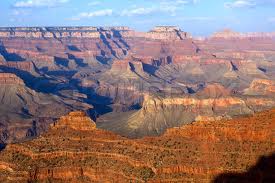Bridging Past and Future Climate Across Paleoclimatic Reconstructions, Observations, and Models: A Hydroclimate Case Study - PDF Unlike the commonly used relative humidity, vapor pressure deficit (VPD) is an absolute measure of the difference between the water vapor content of the air and its saturation value and an accurate metric of the ability of the atmosphere to extract moisture from the land surface. VPD has been shown to be closely related to variability in burned forest areas in the western United States. Here, the climatology, variability, and trends in VPD across the United States are presented. VPD reaches its climatological maximum in summer in the interior southwest United States because of both high temperatures and low vapor pressure under the influence of the northerly, subsiding eastern flank of the Pacific subtropical anticyclone. Maxima of variance of VPD are identified in the Southwest and southern plains in spring and summer and are to a large extent driven by temperature variance, but vapor pressure variance is also important in the Southwest. La Niña–induced circulation anomalies cause subsiding, northerly flow that drives down actual vapor pressure and increases saturation vapor pressure from fall through spring. High spring and summer VPDs can also be caused by reduced precipitation in preceding months, as measured by Bowen ratio anomalies. Case studies of 2002 (the Rodeo–Chediski and Hayman fires, which occurred in Arizona and Colorado, respectively) and 2007 (the Murphy Complex fire, which occurred in Idaho and Nevada) show very high VPDs caused by antecedent surface drying and subsidence warming and drying of the atmosphere. VPD has increased in the southwest United States since 1961, driven by warming and a drop in actual vapor pressure, but has decreased in the northern plains and Midwest, driven by an increase in actual vapor pressure. REFERENCE
|
 EASM2: LINKING NEAR-TERM FUTURE CHANGES IN WEATHER AND HYDROCLIMATE IN WESTERN NORTH AMERICA TO ADAPTATION FOR ECOSYSTEM AND WATER MANAGEMENT EASM2: LINKING NEAR-TERM FUTURE CHANGES IN WEATHER AND HYDROCLIMATE IN WESTERN NORTH AMERICA TO ADAPTATION FOR ECOSYSTEM AND WATER MANAGEMENT | |
| Lamont-Doherty Earth Observatory of Columbia University 61 Route 9W Palisades, NY 10964
| |
|
| |